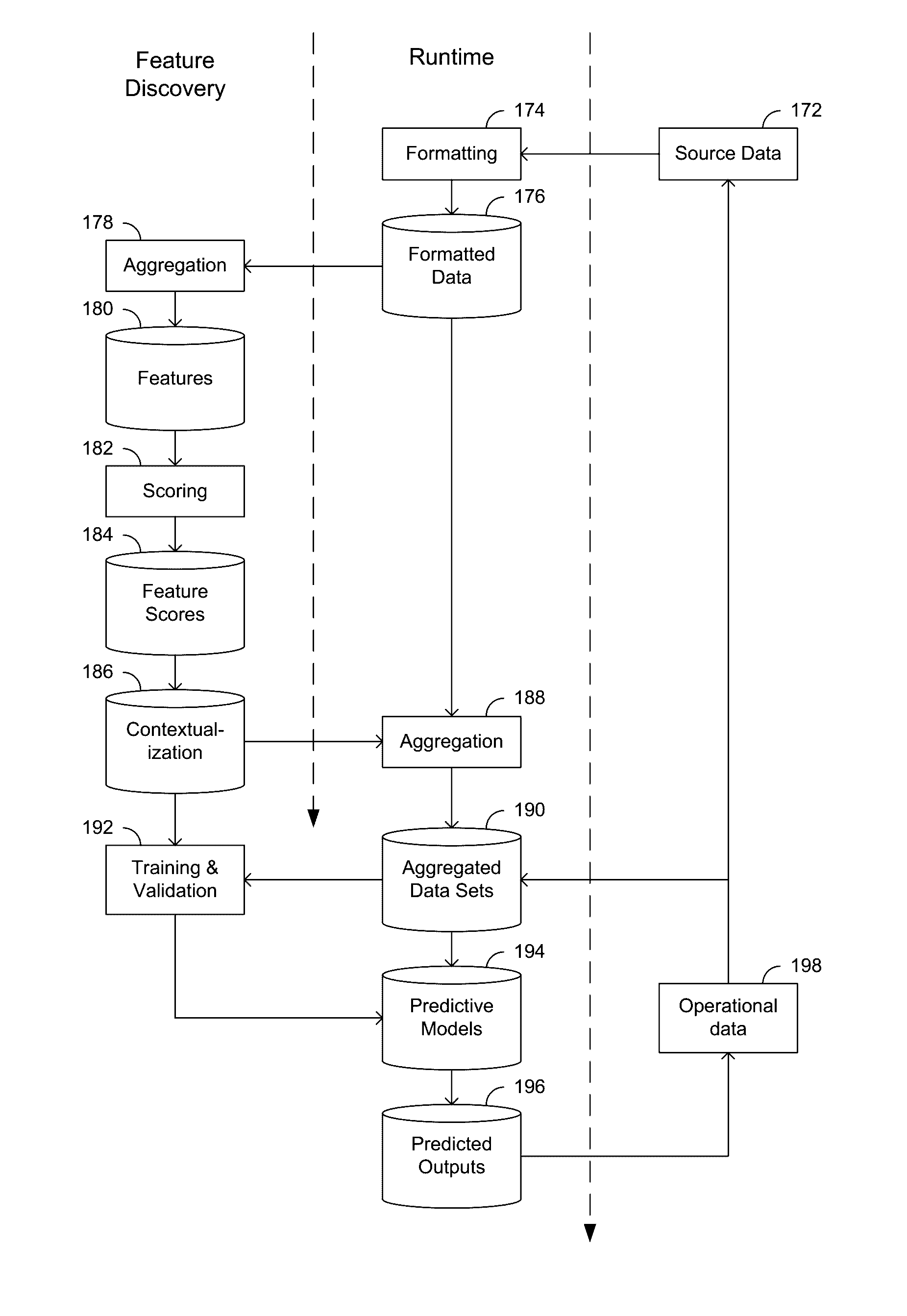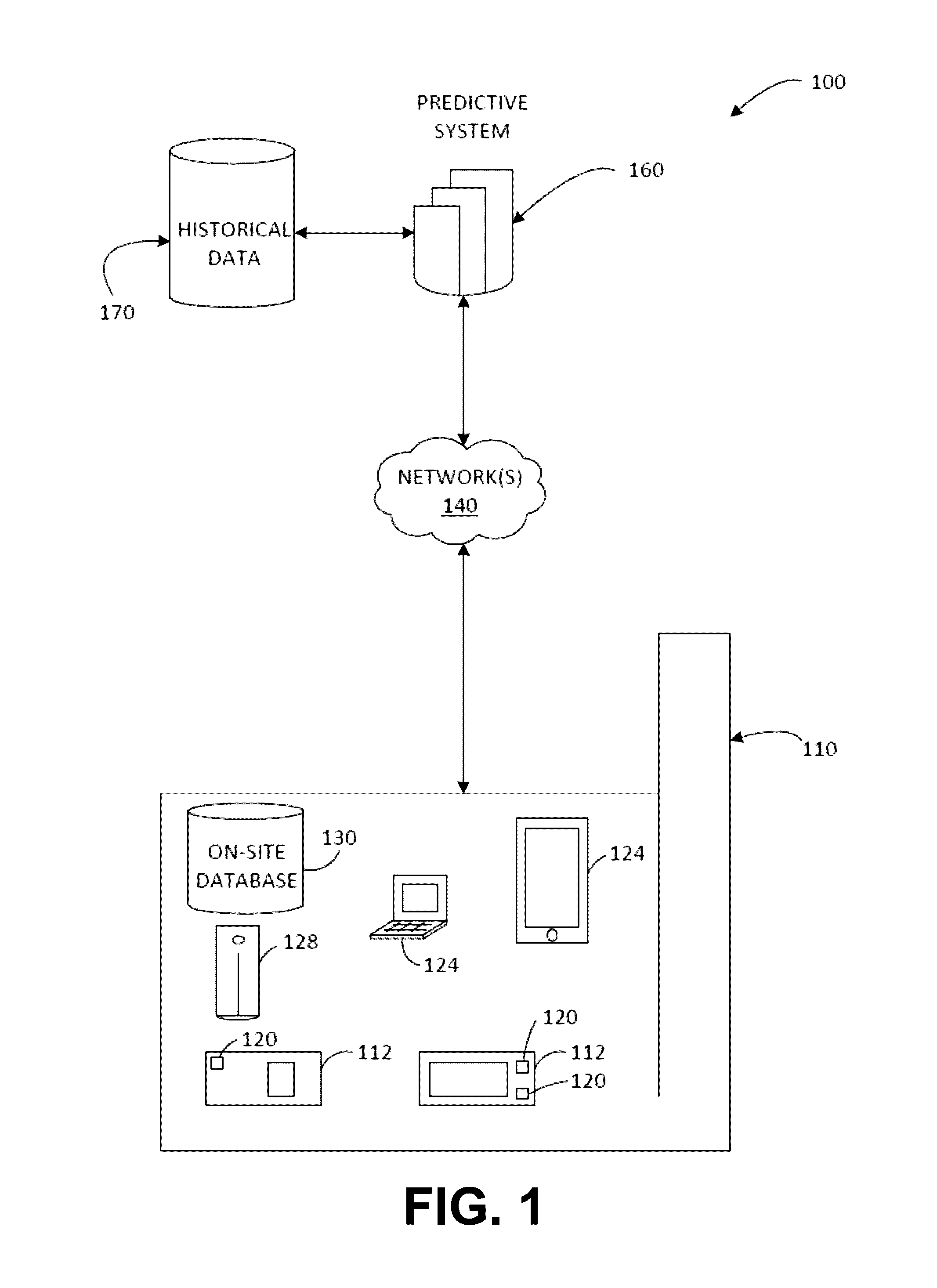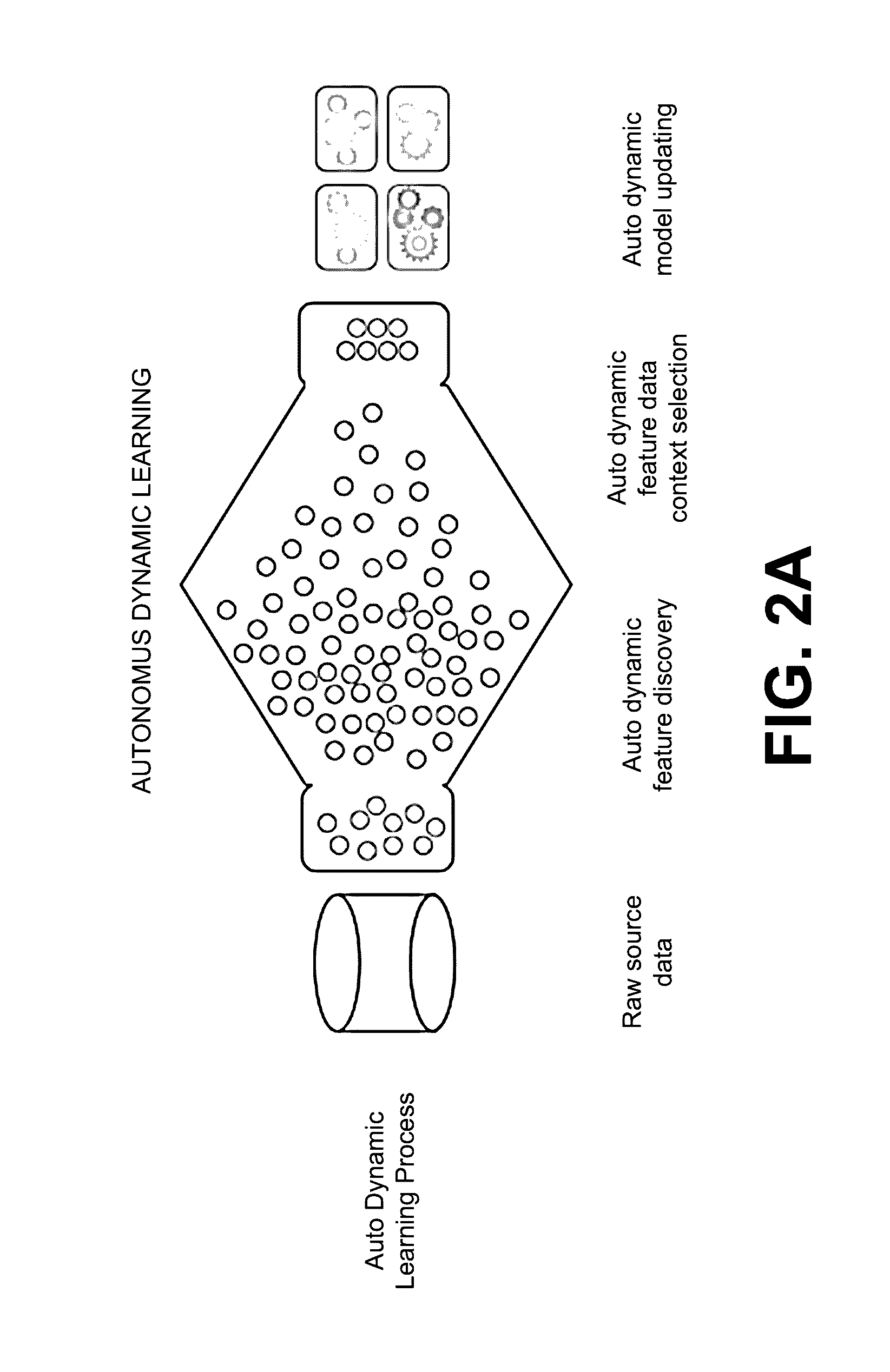Dynamically updated predictive modeling of systems and processes
a predictive modeling and dynamic technology, applied in probabilistic networks, testing/monitoring control systems, instruments, etc., can solve the problems of increasing the difficulty of actually conducting analysis, the vast amount of data available in today's complex systems is too large for existing systems and personnel to assess, and the full operational aspects of an operating system, hardware device, or machine cannot be fully analyzed today
- Summary
- Abstract
- Description
- Claims
- Application Information
AI Technical Summary
Benefits of technology
Problems solved by technology
Method used
Image
Examples
Embodiment Construction
[0020]Reference will now be made in detail to the description of the embodiments as illustrated in the drawings, wherein like reference numbers indicate like parts throughout the several views. In the following detailed description, reference is made to the accompanying drawings, which form a part hereof, and within which are shown by way of illustration certain embodiments by which the subject matter of this disclosure may be practiced. It is to be understood that other embodiments may be utilized and structural changes may be made without departing from the scope of the disclosure. In other words, illustrative embodiments and aspects are described below. But it will of course be appreciated that in the development of any such actual embodiment, numerous implementation-specific decisions must be made to achieve the developers' specific goals, such as compliance with system-related and business-related constraints, which may vary from one implementation to another. Moreover, it will...
PUM
 Login to View More
Login to View More Abstract
Description
Claims
Application Information
 Login to View More
Login to View More - R&D
- Intellectual Property
- Life Sciences
- Materials
- Tech Scout
- Unparalleled Data Quality
- Higher Quality Content
- 60% Fewer Hallucinations
Browse by: Latest US Patents, China's latest patents, Technical Efficacy Thesaurus, Application Domain, Technology Topic, Popular Technical Reports.
© 2025 PatSnap. All rights reserved.Legal|Privacy policy|Modern Slavery Act Transparency Statement|Sitemap|About US| Contact US: help@patsnap.com



